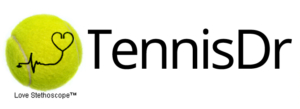Racket sports are asymetric. That means they yank and twist on the spine due to forces expressed on the body unevenly. What is a symetric sport you ask? Weight lifting is symetric as both sides of the body are active in a mirror image.
All this means that racket sports players get “pulled out of wack”! Well, our ship has come in.
You’ve heard of the revolutions in the Middle East and Wisconsin right? Well, there is a quiet technology revolution starting in Chiropractic, which allows soothing, potent treatment of chronic pain with no twisting, popping, or cracking of joints. Plus, the patient can now actually see documented progress and an end to treatment. That deserves a WOW!
If you are an athlete, especially those playing an asymmetric sport like baseball, tennis, table tennis, golf, or racquetball this is big news. This is also big news obviously for non-athletes with chronic pain, coaches, and personal injury lawyers!
Several of my clients told me that I must go see the new pain treatment machines at Dr. Mel Bahri’s Westwood Clinic (westwood-clinic.com) in Los Angeles. His reputation among my clients was swelling (he he).
Once there, I tested two new technologies (ProAdjuster and Myopulse) that can help eliminate the infamous stigma that has kept new patients away from Chiropractic treatment for many years. The two main complaints are the “cracking” of joints and the indeterminate “end of treatment”.
Over several sessions I tested the ProAdjuster (by Pulstar) and the Myopulse (by Advanced Biomedical Technologies). Both machines have been cleared by the FDA for treatment of chronic pain conditions. This article will describe the ProAdjuster treatments.
With this technology, the patient sits comfortably in a massage chair in an upright position without the need to turn the head or neck or even remove their shirt. The ProAdjuster applicator, called a Fras, contains a sensor (piezoelectric), which first sends a light tapping (percussion), into the spine at each backbone segment or vertebrae as a test force.
This force is reflected back from the body, like sonar from a submarine in water, to tell the computer about the position of the bone and stiffness of nearby muscle. The software takes the results of each percussion test from each vertebrae in the spine and INSTANTLY creates a complete and detailed picture of the spine on a large monitor.
That picture reveals the whole spine, its curves (or lack of curves) which gives the doctor and computer specific locations for treatment–the pre treatment data. The computer program then highlights the five most displaced vertebrae and tells the doctor, with a pleasant female voice, where to place the soft fingers of the Fras to administer the treatment phase for each displaced bone.
The body’s natural defenses cause muscles around displaced vertebrae to spasm or rigidly prevent greater misaligned bone from moving further from its proper position. Metered and specific GENTLE percussion is now administered by the computer through the Fras in a series of oscillating taps. These taps coax the vertebra into proper position which also relaxes the nearby muscles, enhancing range of motion, and relieving pressure on the adjacent nerves.
The treatment phase actually feels GREAT. For Chiropractors and patients alike, this is a revolution!
Post treatment re-analysis by the Fras allows objective measurement of changes in spinal position, which can be compared to other sessions and the pre treatment testing down the spine. The patient can actually see and understand the treatment with the doctor standing next to them. That, by itself, is a valuable physical medicine concept that is hard to understate.
The results are instant and easy for a patient to read. No delays, no specialist interpretations, no x-rays, no huge CT Scanners, scary MRI machines, or Sonogram Studies, etc. The software displays the percentage of improvement on the screen for both patient and doctor to objectively assess overall progress allowing BOTH to plan further treatments if needed. The patient, doctor, and computer as a instantly well informed healing team. What a concept!
Incredibly, it actually feels great the whole time. If the days of flinching and tensing up for Chiropractic cracks and pops are numbered, I can adjust to that!
